Building arrows is a process that I have a passion for. I love building arrows. The entire process is something I enjoy from cutting the shafts to size, cleaning them, fletching, and then setting the inserts. Now, what happens when you have to work backward a bit to attain the results you want? You have to do some research and plan your strategy well.
A couple weeks ago I bought a dozen brand new Victory VAP V3 350’s. I had been shooting Easton FMJs for years, but I needed a change. The FMJs were just too heavy for me and I wanted a bit more speed out of my arrows. Plus, I didn’t feel I was getting the accuracy I was striving for. Call it a gut feeling or a need for change, but either way I needed it. After chatting with a few fellow bowhunters, I opted to evaluate a dozen Victory Archery arrows to see if they were a good fit for me. Not only are they a fit, they completely blew me away at the flight, durability, and accuracy.
After building the first dozen from brand new components, I had the opportunity to attempt a reverse build. I traded a dozen new GoldTip shafts for a dozen Victory V6 350s from a guy off of Archery Talk. There were some roadblocks. One is that he fletched them all using Blazer vanes, while I normally use AAE Max Hunter vanes. I was not about to refletch them as these were perfectly fine to shoot, so I left them. I decided to use it as part of the final flight test. The second issue is they were already cut and the 50 grn. Penetrator outserts were installed using super glue. The good news is they were cut far longer than I needed, so my plan was to cut off about 2″ of excess carbon and then somehow remove the outsert. That would be the true test as I wanted to do it with little damage to the outsert itself. (I wish I could have shared more photos, but holding a camera or setting it up while I was trying to work was hindering the process.)
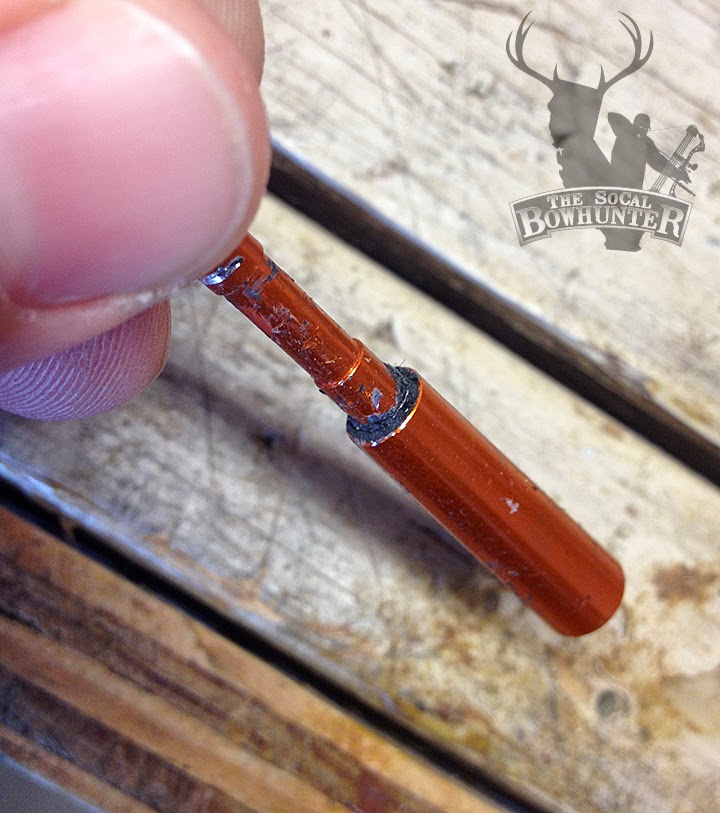 |
| A little scuffed up, but a good outsert with glue and carbon residue. |
I measured and cut the arrows, careful to leave plenty of room for the outsert end. I didn’t want to cut into that. Once the arrows were cut, the real work began. How was I going to get the 2″ or carbon arrow off the outsert? My first option to consider was acetone. It is a solvent that can pull up super glue and also weaken carbon fiber if left sitting in it for too long. My second option was to somehow cut through the carbon and remove as much of the remaining arrow that I could and use a knife to cut off the remainder. The third option was simply to buy new outserts. Yeah, that’s a no go as I knew this could be done and done properly.
I opted to cut off as much of the carbon as I could and then use acetone to remove any remaining glue and residue. I have a rubberized arrow mounting feature for my vise that works exceptionally well. Wearing safety glasses, I secured each outsert and began the painstaking process of slowly removing layer upon layer of strong carbon. Splitting the shaft up the middle made the most sense and worked much of the time. After six arrows like this I began to get weary and wanted to try another route. This time I used a pipe cutter to slowly cut small sections of the arrow away. Once cut, I removed the section with a pair of pliers. It actually worked well!
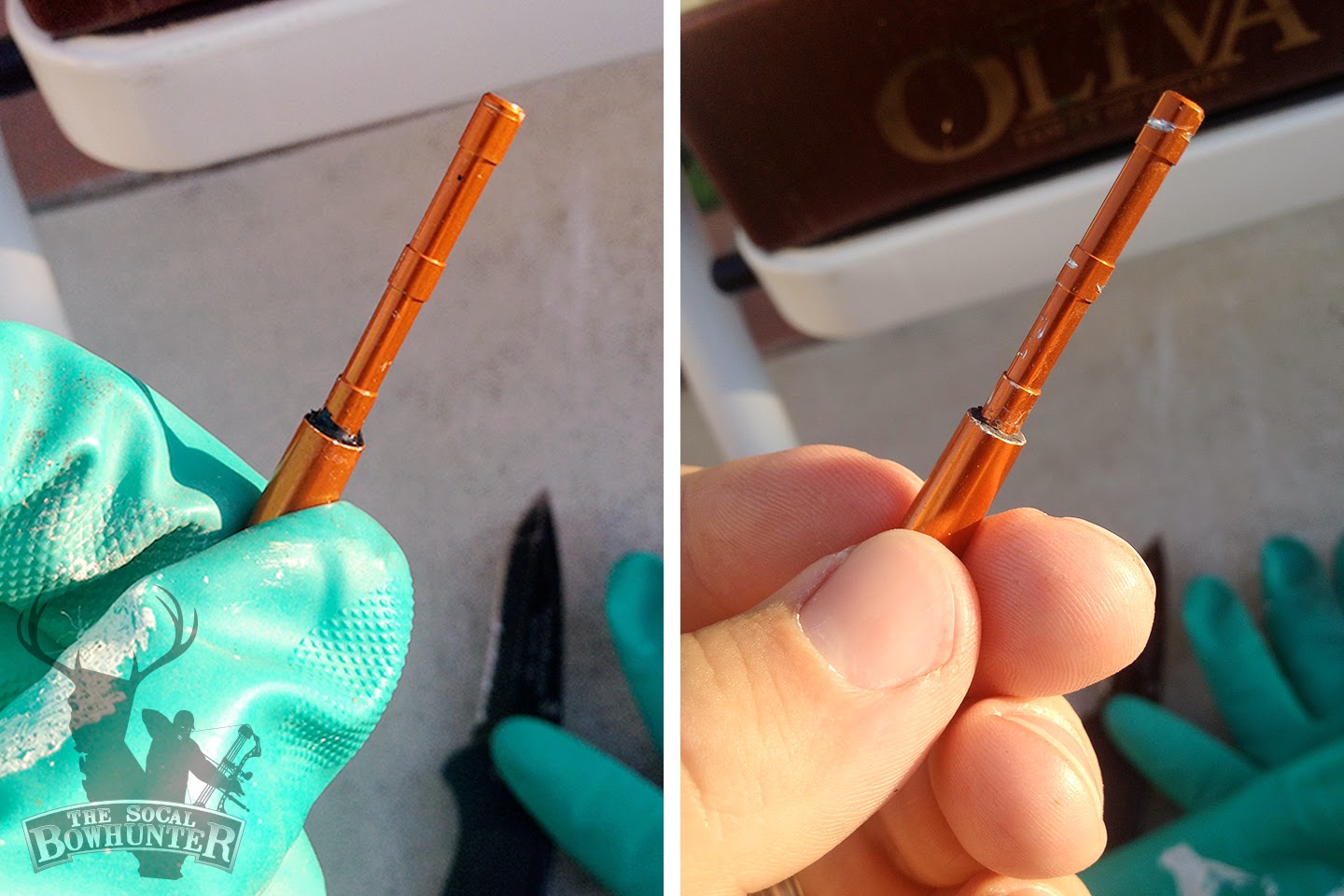 |
| Excess carbon (L) and a clean outsert (R) after soaking and scraping. |
The remaining 1/4″ of carbon was fused solid. I cut, notched, cut again and removed nearly 98% of the excess. To remove the rest I decided it was time for acetone. On went the rubber gloves in preparation for using this solvent. It’s powerful, so please use caution when using it. Be sure the area is well ventilated, is not around any sparks, and is kept away from children. I dumped the dozen outserts into the ashtray and poured enough acetone to cover them all. After sitting in the solvent soup for an hour, i removed one at a time and chipped away at the glue and carbon. The first bits came off very easy and then there was more glue underneath. This process could be repeated a few times, but I felt I was as close as I would need to be. Thirty minutes later I had a dozen fairly clean outserts ready to be tested.
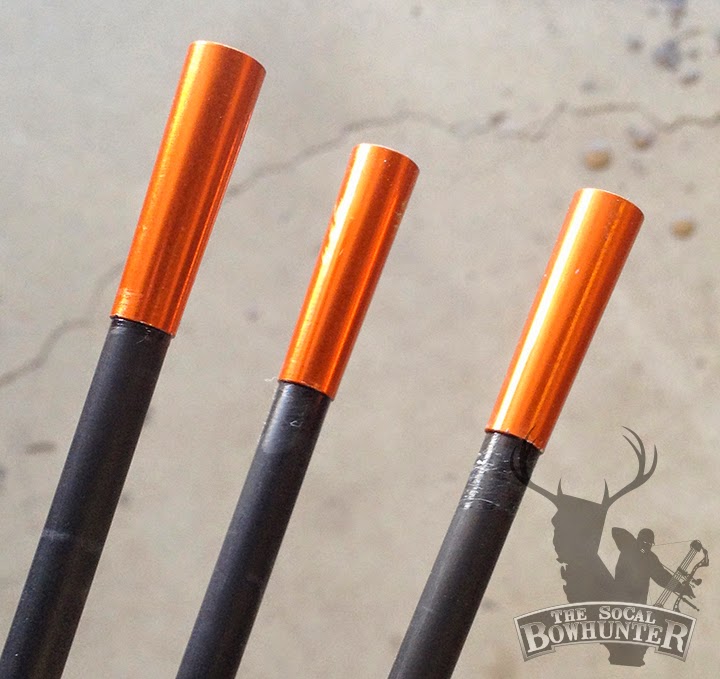 |
| Not perfectly clean, but close enough to get the job done in my opinion. |
Almost immediately I noticed that there was just enough residue left on some of the outserts that I would need to rethink my strategy. Using the arrow stone from my Eastons, I sanded away some of the end of the shaft. A few turns back and forth and the outserts slid in and fit surprisingly well. I ran a small bore brush inside the shaft to clean and scour it for glue adhesion prior to cleaning the end with rubbing alcohol and a Q-tip.
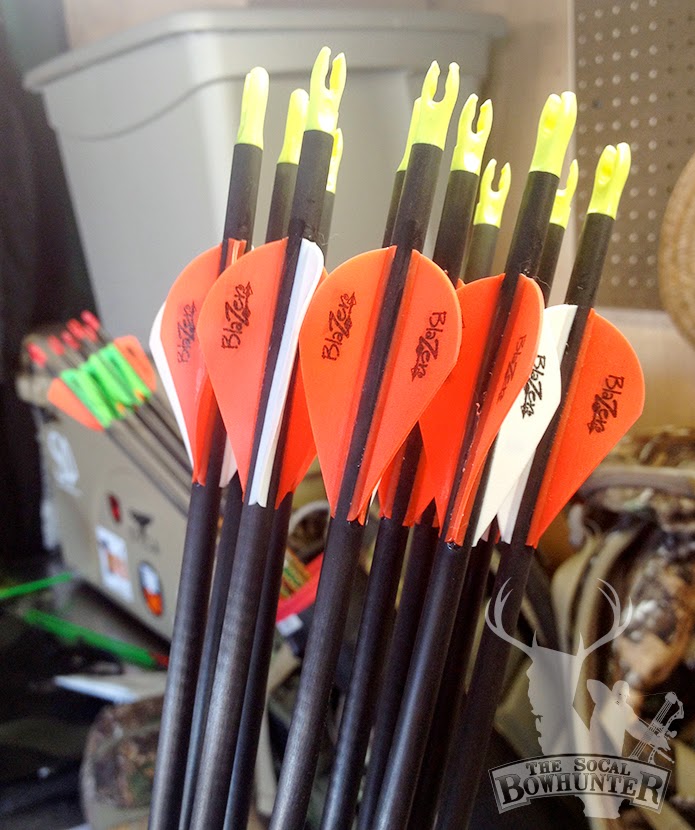 |
| VAP V3s with Max Hunter vanes (back) and VAP V6s with Blazers (front) – will I see a difference in flight? |
A half hour later, the shafts were dry and ready for the outserts to be glue in. Before gluing the outsert in, I weighed an arrow from my first batch and one from my second batch. Each arrow from the first dozen weighed in at 288 grains. The arrows from the second dozen range from 284-286 grains. For me that will work great. Gluing took less than ten minutes and they were ready to shoot the next day. Friday evening will be the test of truth as I test them at the range against the first dozen arrows. Any thoughts as to what my outcome will be?
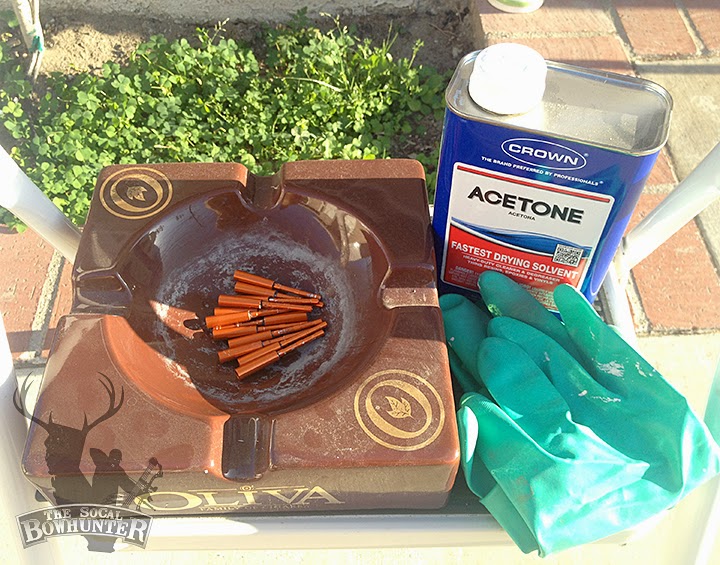
Be First to Comment